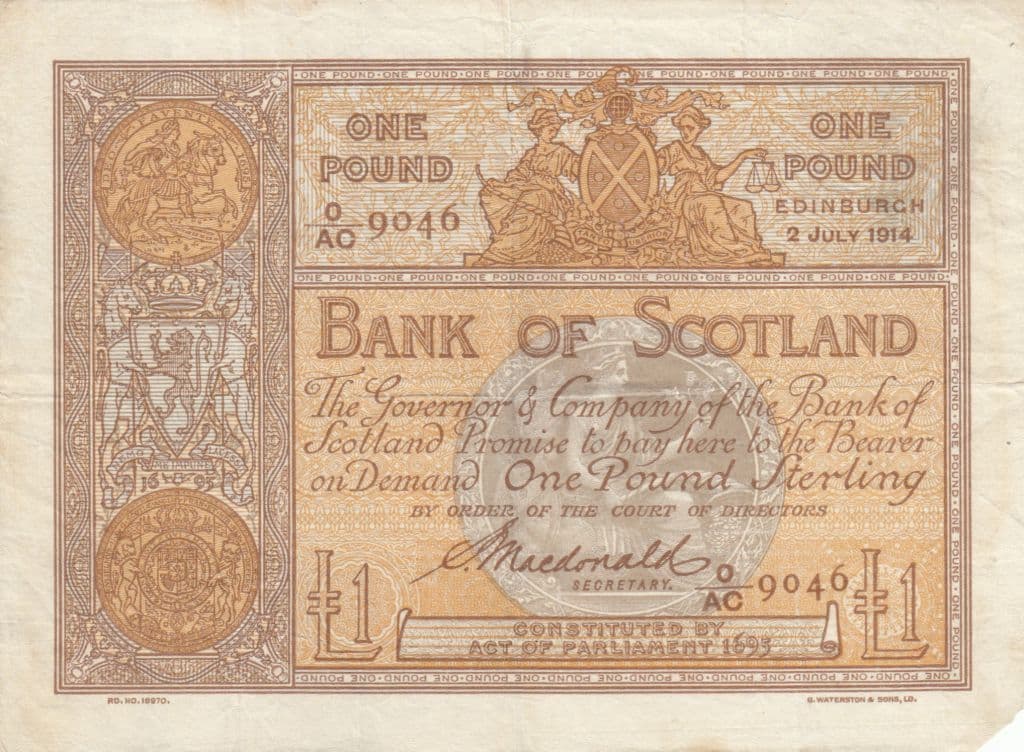
A brief history of Scotland's legal tender
Have you ever heard about the brief period when Scottish banknotes were legal tender? Or are you shocked to hear they are not legal tender after all?
It's a commonly held misconception that Scottish banknotes are legal tender. The truth comes as shock to many, but most particularly English tourists who hope to spend their Scottish notes when back home, only to find the currency has been legally rejected. In fact, Scottish banknotes are so rarely seen outside of Scotland, a third of English residents believe Scottish banknotes are fake! But why are they rejected? And why do they still exist?
The difference between legal tender and legal currency
First and foremost, Scottish banknotes are legal currency. Legal tender, however, is the only type of payment a creditor must accept if it is offered in return for a debt. Though Scottish currency can be accepted; it is legal for creditors to decline Scottish banknotes if they are offered in return of debt.
While Bank of England banknotes have been in circulation in Scotland since their creation, Scottish banknotes still exist as a legal currency. Though by law the banknotes can be denied, as many of the English have discovered the hard way, many shops, restaurants and bars still accept these banknotes in Scotland (and England if the merchant is happy to accept!) and tourists often take them home as a memory of their visit.
Though, before the creation of the Bank of England banknote, this seemingly small legal limitation became an issue in the days leading to the outbreak of World War I when gold coins, a legal tender, were in high demand thanks to the absence of paper money in England.
A brief history of Scotland's legal tender
The Bank of England's transition from gold to paper
Just days before the outbreak of World War I, Britons turned to the banks to convert money to gold. According to the Royal Bank of Scotland, “great crowds queued outside the Bank of England.” In just 6 days, the Bank of England “paid out £12.3m of its £26.5m gold coin reserves.”
The impact of the sudden uptake of gold coins forced the Bank of England to turn to paper money because they feared depleting their gold stores completely. While banknotes of £5 and up were already in existence in England, the substantial amount of money that these banknotes represented at the time meant many people had never owned or even seen a banknote. The government desperately tried to persuade the English to use paper money for everyday transactions in a bid to save the country’s gold stores. In Scotland, however, the transition from gold to paper money was significantly easier.
Temporary tender
In Scotland, by 1914, national commercial banks had been producing and using their own banknotes for over 200 years. However, the Scottish banknotes were only considered legal currency. When creditors and merchants refused debt payments in anything other than legal tender or gold coins, the British government granted legal tender status to Scottish banknotes during wartime “with the caveat that at their head offices, banks were still obliged to pay in gold or Treasury banknotes.” This ensured Scots could continue to purchase with their national currency without fear of legal rejection from merchants.
Scottish legal tender in circulation
The demand for paper money increased throughout the war and by 1918, circulation of Scottish banknotes reached £25m, compared to just £9.5m in 1914, peaking at £29m by 1920. While it fell again in the mid-1920s, it “still remained at least double the pre-war circulation.”
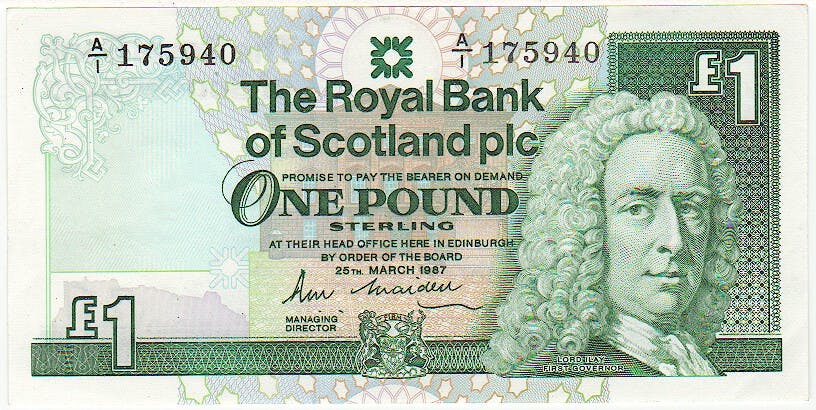
Image courtesy of Thebanknotestore.com
Scottish currency today
Scottish banknotes status of legal currency still stands today. Although, it’s not legal tender anywhere in the UK, not even Scotland itself!
“What’s classed as legal tender varies throughout the UK? In England and Wales, it’s Royal Mint coins and Bank of England notes. In Scotland and Northern Ireland it’s only Royal Mint coins and not banknotes.”
Despite merchants and creditors having the legal right to deny the currency, Scotland continues to use, print and circulate their own banknotes which continue to be used for payment transactions. Today, Scottish banknotes continue to be produced by only 3 national banks in denominations of £5, £10, £20, £50 and £100. The Royal Bank of Scotland, Bank of Scotland and Clydesdale Bank all have their own unique, beautiful designs for each denomination, much like the various banks of Hong Kong.
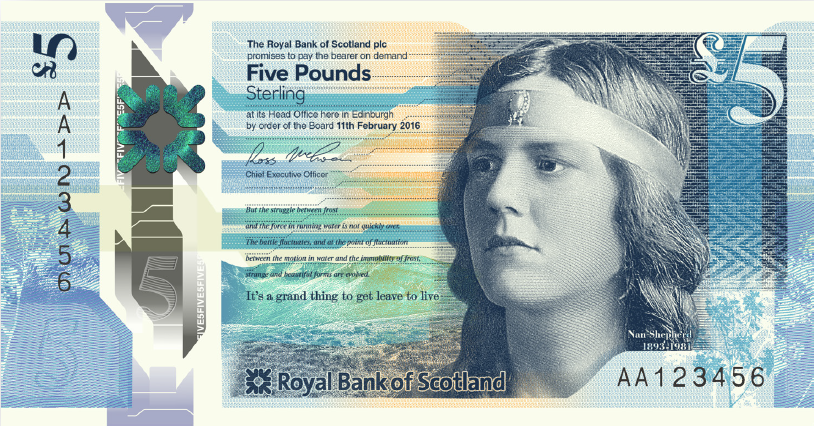
Royal Bank of Scotland £5 note
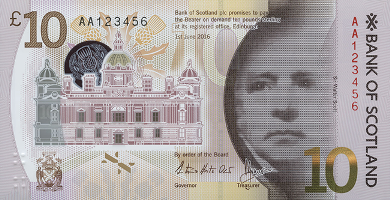
Bank of Scotland £10 note
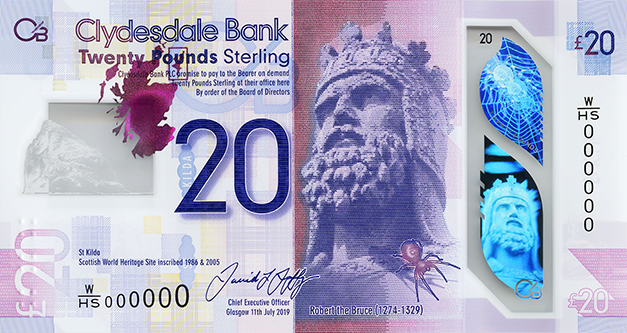
Clydesdale Bank £20 note
Nodding to the heritage of the Scottish banknote, the only bank that continues to produce £1 notes is the Royal Bank of Scotland. Scotland also regularly issues commemorative banknotes in order to celebrate important historical events.
While the Scottish banknote may have lost its legal tender status again after the war, it continues to exist as a prominent staple in the Scottish people’s everyday life, offering a tangible reminder of the nation’s history and its importance during wartime Britain.

